After Winter, the Spring
Carpets of yellow and purple wildflowers color the landscape as spring envelops the Sonoran desert. I leave the windows open these mild March nights and lie awake listening to the yipping of coyotes. Three coyotes can sound like a dozen, as their howls echo and multiply up and down the canyons. I visualize little pups following coyote mothers, their high pitched yelps piercing the darkness.
Our ranch is host to open range cattle that freely wander about the countryside picking at the new clumps of green grass and tender mesquite leaves. There are babies everywhere—little calves kicking up their heels and running for cover whenever I approach them on my walks. They race for their maternal protector, startled by my presence, hiding behind their mothers’ bulky bodies and grabbing an udder for comfort. The baby calves bawl when frightened and separated from their mothers, racing to them for assurance and a safe harbor. I am always wary of mothers and babies in the desert and keep my distance.
I think about the bonding rituals of parents and children when I visit the comedor each week. The migrants have been through so much—time in detention centers, days walking in the desert, injuries sustained while hopping trains or being beaten or assaulted along the way.
But nothing touches the deepest core feeling of pain like the separation of families.
Nothing.
Every week I am asked the same question: “Can I use your cell phone to call my family?” Often my American friends ask why a mother or father would leave their children and migrate north to the U.S. A loving, caring family cannot flourish without economic support and a safe environment. These are the reasons that parents leave their homes and migrate north.
I witness fathers in tears because they are afraid that their children do not remember them. Mothers express great distress about trying to maintain connections with children who are very young. I hear them talking on the phone to their children: “We will be together soon. You must be strong.” Sometimes these are just dreams. Reunification with families are just that—dreams. Still, the dreams offer hope.
On a recent visit to el comedor I met a young man, a teenager, from Honduras. He approached me speaking rapid-fire Spanish with a look of panic on his face. He was separated from his brother and deported the night before; his brother and another friend are in a detention center somewhere in Arizona. The adolescent was on the verge of tears, trying very hard to control his emotions. His voice was cracking; his eyes were brimming. I directed him to Grupos Beta and No More Deaths, two agencies that assist in reuniting migrants with families and friends. During my day in Nogales I saw this teenager in various locations, and each time he approached me with that look of panic in his eyes asking for help. I cannot forget his face.
Another woman sat eating breakfast with her three year old son, Julio. She arrived from Oaxaca after eight days of traveling and is looking for her husband. This morning she found out that her husband has been sentenced to 180 days in a detention center in Arizona. She sits staring off into space, rocking back and forth immobilized while her little boy races around the comedor with a toy car. She will stay in Nogales and try to find work. After awhile she smiles at her son as he draws and scribbles with some crayons and paper. They are together. They will get through this.
Several months ago another little boy, age nine, told me that he plans to cross the border and go to New York, along with his sister (age 12) and aunt (age 19). His father, his “Papa,” lives in New York City and he has not seen him for three years. The Samaritans try and dissuade this vulnerable trio, telling them about the dangers of the journey—the desert, the extreme temperatures, the federal agents that will look for them, and the wall.
When I ask the boy why he wants to travel all the way to New York, he tells me, “…to see my Papa. I just want to know him.” The child breaks my heart.
The boy draws a picture of what he has experienced these past weeks. He draws himself, a wall, mountains, and up in the corner is his Papa surrounded by tall buildings. It is New York City, and this is a great adventure. We try and call his father in New York, and cannot reach him.
I am horrified.
The increased militarization efforts to secure the border have made reunification with families more difficult. Migrants who cross the border into the United States without papers literally risk their lives in the desert. The dangers involved in getting here mean they are more likely to settle in the U.S. for long periods of time, if not permanently, and will not risk a visit back “home” to Mexico or Central America. So the militarization and increased security on the border have actually encouraged undocumented workers to stay under cover in communities in the U.S.
Family separation is becoming a norm in Latin America. When designing a compassionate comprehensive immigration policy, we must make travel back and forth from the U.S. to Mexico an easier process. The separation of families for long periods because of our immigration laws is a moral travesty. Many of the migrants I meet at the comedor whose homes are in Mexico do not want to become U.S. citizens. They want a legal path which allows them to travel back and forth across our borders, working in the U.S. for short periods, and then returning home to their villages and cities. Creating a system of guest work visas would help keep families together.
What I witness at the comedor are casualties of our free trade agreements and a perverse, unworkable policy about whom we allow into this country and whom we decide to kick out. Politics and economics have separated thousands of families. Their stories need to be told.
Witnessing the pain of men, women and children separated for long periods brings up my own feelings about living far from children and grandchildren. I will call my kids tonight and listen to the stories of their day. I urge you to call your own families, and make plans for a visit soon. We all live such privileged lives. We can travel, email, Skype, and telephone loved ones when we choose. Most of us are middle-class Americans. We have the right papers.
We have very few human ties that touch us deeply—our children, our mates, our family of origin, our dearest friends. Let us nurture those bonds with our own loved ones, and help heal the broken family ties of our neighbors to the south.
Spring has returned. Spring brings me hope.
(I will be traveling during the month of April, attending a language school in Mexico. My best wishes for a spring of hope and promise, with some precious moments with family and friends. I will resume the blog in May when I return to volunteer at the comedor.)
The Green Valley Samaritans have a wonderful website that describes the activities which touch the lives of migrants in the borderlands. Check out: www.gvsamaritans.org
The Santa Cruz Community Foundation (Nogales, AZ.) and its sister organization, FESAC (Nogales, Mexico) have a unique international partnership that identifies emerging issues and strengthens community resources to solve those issues. Contact Bob Phillips, Director, at (520)761-4531
The Kino Border Initiative is a binational organization that provides direct humanitarian assistance at el comedor to migrants. KBI participates in research and advocacy to transform contemporary immigration policy. Their website is: www.kinoborderinitiative.org
I am proud to be involved with these organizations and endorse their activities.

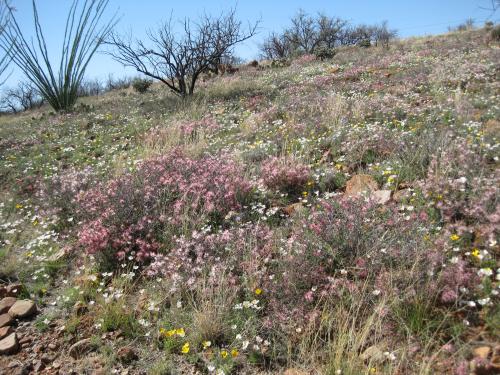
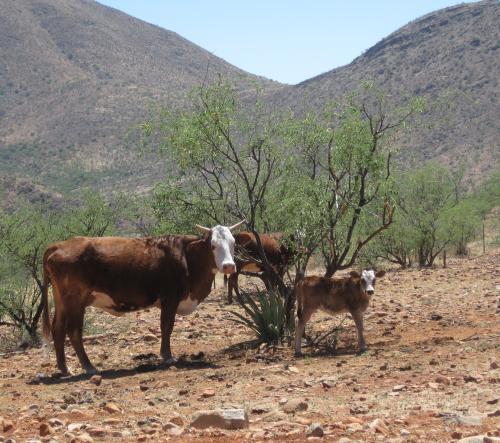
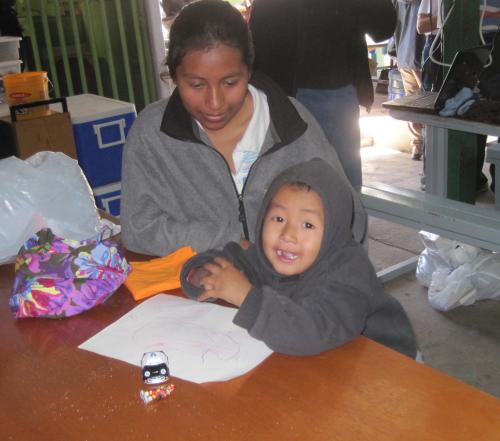
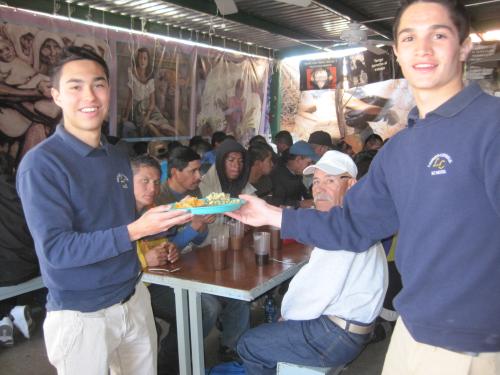
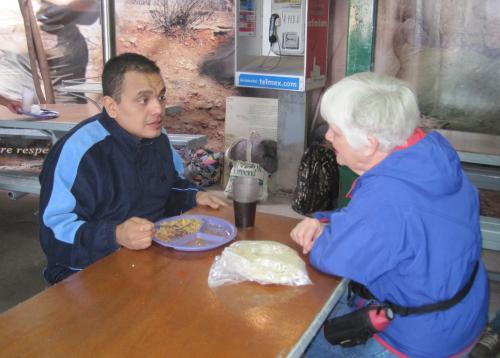
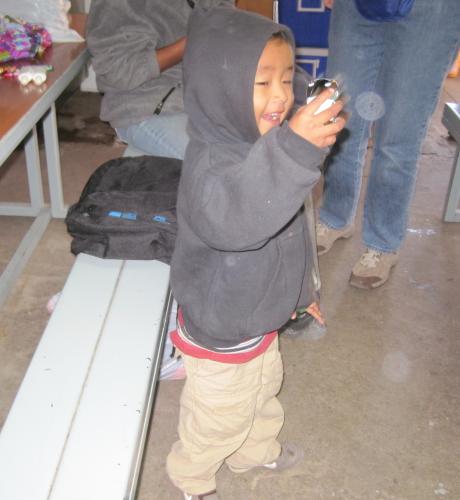
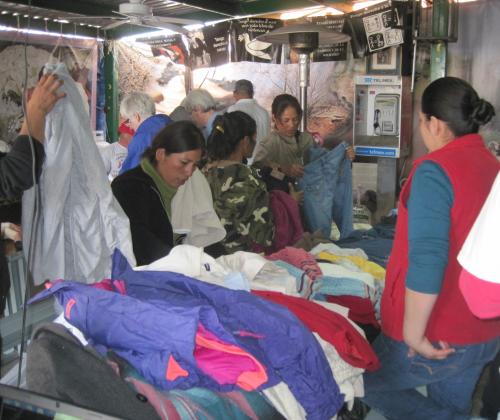
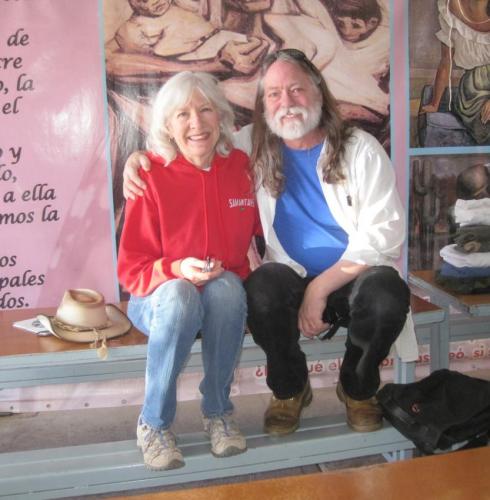

Hi Peg,
Thank you for your latest posting — the beauty of the spring flowers on the hillsides belies the harrowing scenes of human suffering these same hills also bear witness to. You mark the scandal of the needless human suffering imposed by brutal policies and arbitrary borders in the stories articulated by the migrants in el comedor.
All good wishes,
Joseph
—
Dr Joseph Pugliese
Associate Professor of Critical and Cultural Studies
Department of Media, Music, Communication and Cultural Studies
Macquarie University
NSW 2109
Australia
¡Vaya bien! Espero con ilusión platicar contigo en español cuando regresas.
Ricardo
Do you ever think about going before congress and offering a first-hand perspective of what is needed? Most of those who sit in these powerful seats have no experience up close.
Thanks for what you do and for sharing. keeps us grounded
Susan
Enjoy Oaxaca
The least Congress can do is initiate guest worker permits. Great blog.
Jan
Peg
Another fantastic blog. Enjoyed seeing the beautiful spring flowers. You are an excellent writer. The stories always touch my heart.
Thanks for posting the references to supportive organizations.
Pat
This is beautifully well-written. It’s so heartbreaking to think of all those separated families… and so frustrating to think of the distance between them and the politicians who decide their fates.
As always I am so thankful that you express what so many of us feel about our work at the comedor. May your time at language school be enriching thus giving you the words you so want to say and understand with our comedor friends.
Bette